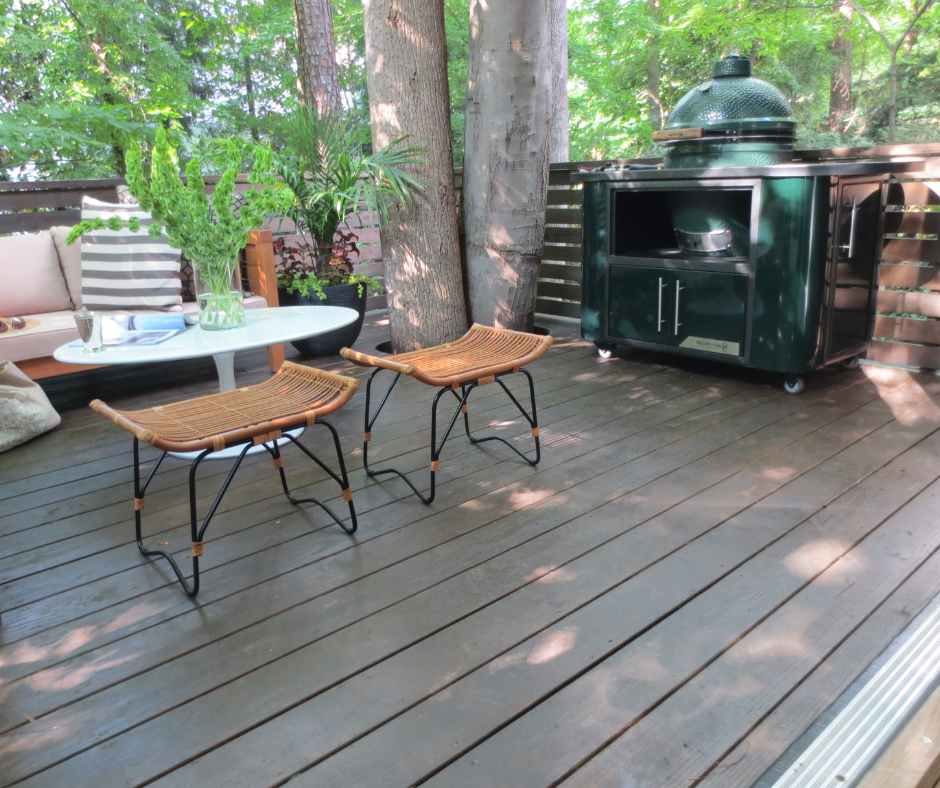It may be winter, but it’s never too early to start planning your deck project for the spring. Each year, more than a million decks are built or upgraded in America, and homeowners are rediscovering the charm and energy-saving practicality of porches.
Beauty, added value, and comfort are just a few reasons why decks and porches are so popular, not to mention these “outdoor rooms” extend the living space of the home for open-air entertainment and relaxation.
But decking boards, the deck’s walking surface, have a tough job. Decking takes the harsh day-to-day punishment from weather and foot traffic, and as the most visible part of the deck, they must meet high expectations for long-term fit, finish, and appearance.
That?s why pressure-treated Southern Pine is the most popular real wood decking choice. But some homeowners and builders still opt for composite materials when considering their decks.
Solid real wood works in harmony with the environment, blending naturally with the surrounding landscape. Wood is the best environmental choice for outdoor projects. Compared to wood, the production of plastic or composite decking production can require up to eight times more energy. Solid wood is a naturally grown and renewable product, unlike composites that are usually made with petroleum-based materials such as polyethylene, polypropylene, polystyrene, or polyvinyl chloride.
So here’s a breakdown of the advantages of using real wood vs. composite or plastic materials for decking:
- Appearance: There is no substitute for the look and feel of real wood. Wood decking provides a warm, natural look that blends beautifully with the landscape. Plastic or plastic composites, even with faux wood grain, still look and feel artificial.
- Comfort: Wood is a naturally insulating material and does not conduct heat or cold like metal or plastic. In direct sun, some types of plastic or composite decking can become much hotter than wood, hot enough to burn or blister feet.
- Economical: Wood is an economical choice compared to plastic or composite decking, which may cost up to five times more.
- Safety: Pressure-treated wood is safe for people, pets, and the environment. Furthermore, advanced preservative formulations contain no arsenical or chromium compounds yet provide resistance to decay and termite attack.
- Renewable: Wood is the only building material that uses the sun’s energy to renew itself in a continuous cycle. Sustainable forestry practices ensure that our supply of homegrown wood will be maintained for future generations. On the other hand, plastics are derived from finite petroleum resources.
- Earth-friendly: The manufacture of wood products uses less energy and produces less air and water pollution than other building materials. Manufacturing plastic decking requires more energy than a comparable piece of wood decking.
- Strong: Wood can be up to four times stronger than plastic or composite products, and possesses up to nine times the stiffness of artificial decking. Wood decking is not affected by heat, which tends to promote creep (sagging) in composites over time.
- Maintenance: Despite claims to the contrary, all decking requires maintenance. Periodic cleaning and application of a water-repellant sealer is all that is needed to keep a wood deck in top shape. A good scrubbing usually removes most stains on wood decking.
- Decay/termite warranty: Wood preservative manufacturers typically offer a limited lifetime warranty against decay and termite attack in residential use. Plastic or composite deck manufacturers typically offer a limited warranty.
- Standardized product: Lumber production and pressure treating facilities are monitored by approved inspection agencies. These agencies operate under rigorous protocols to enforce uniform performance and quality standards approved by the American Lumber Standard Committee and/or the American Wood Protection Association.
Learn more at southernpinedecks.com.
